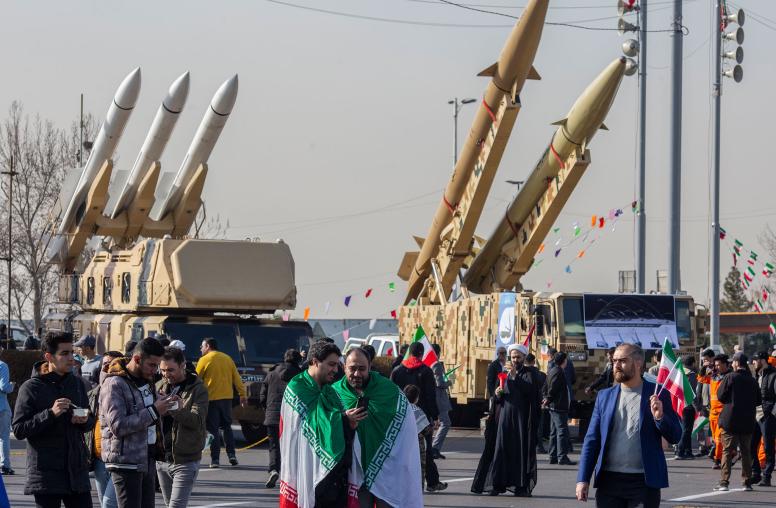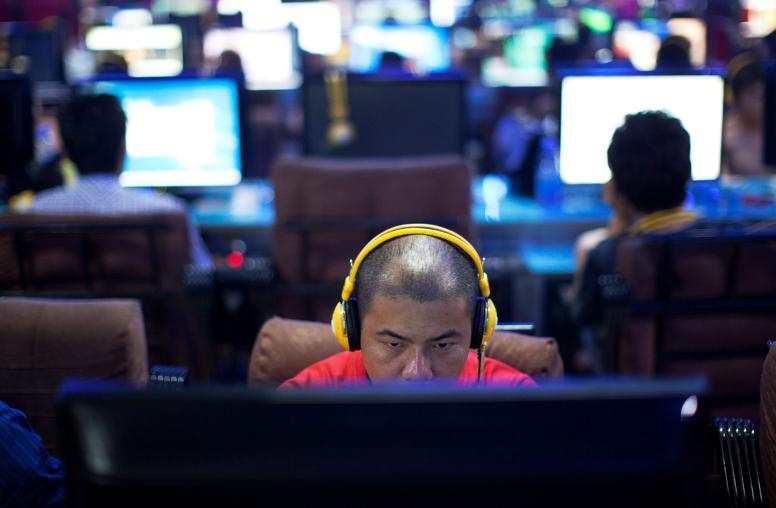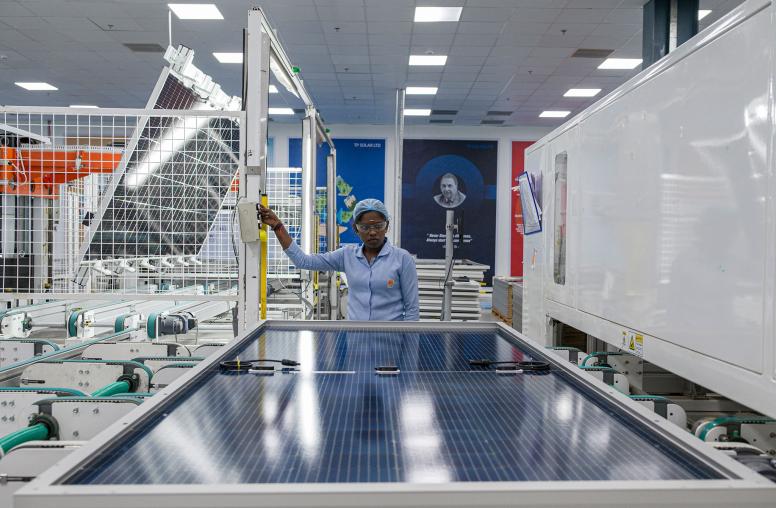China, Philippines Tensions Risk Wider Conflict that Could Draw in the U.S.
As Beijing continues its intimidation and coercion campaign in the South China Sea, can Washington de-escalate tensions?
In yet another act of Chinese aggression in the South China Sea, a Chinese Coast Guard vessel employed a water cannon last weekend to redirect an unarmed Philippines Navy supply boat. The incident took place in disputed waters near the Second Thomas Shoal. China claims the shoal and nearly all of the South China Sea as its own, but an international court has said both the shoal and surrounding waters belong to the Philippines.

Chinese-Filipino tensions have been on the rise since last year, as a new Philippines president has moved Manila closer to Washington and China has continued to assert its claims over most of the South China Sea through similarly proactive actions. Given that Washington and Manila have a mutual defense treaty, there is credible concern that an incident like this could trigger a wider U.S.-China conflict.
USIP’s Brian Harding, Andrew Scobell and Carla Freeman analyze what’s driving China-Philippines tensions, what Beijing is signaling with its aggressive moves, and what Washington can do to de-escalate tensions.
What is behind the tensions between China and the Philippines over the Second Thomas Shoal?
Harding: Since taking office in June 2022, Philippines President Ferdinand Marcos, Jr. has reversed the conciliatory approach the Philippines took to its disputes with China in the South China Sea under former President Rodrigo Duterte. Instead, Marcos has sought to shine light on China’s efforts to swarm and intimidate Philippines fishing and coast guard vessels. Marcos has simultaneously made bold moves to deepen defense ties with the United States, bringing China-Philippines ties to a new low.
The Second Thomas Shoal has long been a likely candidate for the first South China Sea showdown between the Philippines and China since Beijing took control of Scarborough Shoal in 2012. Even by the often arcane standards of the disputes in the South China Sea, Second Thomas Shoal stands out. In 1999, the Philippines intentionally beached a World War II naval vessel on a submerged reef, located within the Philippines’ exclusive economic zone, and has since maintained a small contingent of Marines onboard in extremely austere conditions. Under international law, the reef has no status and if the ship were to fall into the sea it would have no utility absent a massive campaign to build an island on the submerged reef. As a practical matter, in recent years China has turned a blind eye toward the Philippines replenishing supplies for the Marines onboard but has blocked the delivery of materials that could repair elements of the ship.
What is China signaling with these provocative actions?
Scobell: The recent aggressive actions of a large Chinese Coast Guard vessel unleashed upon a tiny Filipino Navy supply vessel is merely the latest episode in a decades-long campaign of intimidation and coercion by Beijing in South China Sea. China maintains expansive territorial claims over islands, reefs and waters in the South China Sea and insists that Beijing has the right to restrict access to ships and boats from other countries to these areas. This campaign of harassment has ramped up under tenure of Xi Jinping with China’s vast fleet of coast guard vessels vigorously serving as “blunt defenders” of Beijing’s sovereignty. Many of these white-hulled ships are far larger, much better equipped, and more intimidating than the gray hull naval vessels possessed by most other Southeast Asian states.
China refuses to acknowledge the rival claims of other states in the South China Sea, including those of the Philippines and continues to completely ignore the sweeping 2016 decision by the Hague-based Permanent Court of Arbitration. In this case, which was brought to the court by Manila, the court ruled that China’s so-called nine-dash line by which Beijing claims sovereignty over virtually the entire South China Sea had no basis whatsoever in international law. Indeed, China has persisted in its well-orchestrated campaign of slow intensity conflict — what is widely called “gray zone” actions — to forcefully advance its claims and aggressively push back against rival claims all while staying below the threshold of military conflict. Beijing purposefully seeks to avoid outright war in the South China Sea, and this is especially the case where the Philippines is concerned since Manila is a treaty ally of the United States.
What can Washington do to de-escalate tensions?
Freeman: The United States has already taken an important step toward de-escalation with its August 5 State Department press statement. The statement not only called out China for its dangerous actions as a threat to regional peace and security and urged China to abide by the 2016 arbitral ruling, it also affirmed that an armed attack on Philippine public vessels — and other military assets — would "invoke U.S. mutual defense commitments under Article IV of the 1951 U.S. Philippines Mutual Defense Treaty."
Beyond this effort to persuade and deter China, the United States should engage in diplomacy to encourage allies and partners in the region to make clear to Beijing their own concerns about the risks to peace posed by the confrontation. Regional allies have already issued statements criticizing Chinese behavior, with Tokyo using unusually strong language to condemn China's conduct.
At the same time, these tensions should energize Washington's efforts in support of confidence-building measures and a binding code of conduct (CoC) for the South China Sea. In July, China and the Association of Southeast Asian Nations (ASEAN) reached agreement on new guidelines for negotiations on the latter. A major obstacle toward progress will be ASEAN's preference that such a COC follow international law, including the Law of the Sea. U.S. diplomatic capabilities in this area would be significantly enhanced if it ratified the United Nations Convention on the Law of the Sea.
In the meantime, China's actions affirm the logic of growing U.S.-Philippines defense ties and undermine China's efforts to cast itself as a source of peace and stability in the region.



